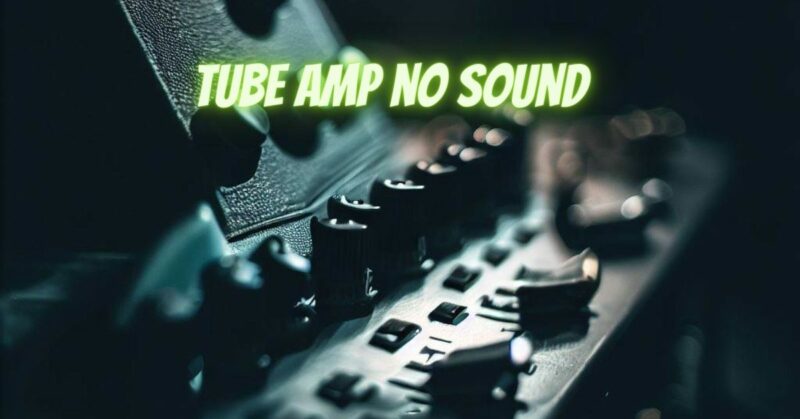Tube amplifiers have long been prized for their warm, rich, and dynamic sound. However, encountering a situation where your beloved tube amp produces no sound can be disheartening. Fear not, as we embark on a journey of troubleshooting to uncover the potential causes and solutions behind the silence. In this article, we will guide you through the process, helping you restore the melodic magic of your tube amp.
- Power Up and Warm Up:
a. Check the power supply: Ensure that your tube amp is properly connected to a functional power outlet. Verify that the power switch is turned on and the amp’s indicator lights are lit. If not, examine the power cable, fuse, and power switch for any issues.
b. Allow for warm-up time: Tube amps require a warm-up period before they reach optimal performance. Give your amp ample time to warm up, usually around 30 minutes, as the tubes gradually reach their operating temperature.
- Inspect the Tubes:
a. Tube condition: Carefully examine the tubes in your amp for signs of damage, such as discoloration, cracks, or a milky appearance. Replace any faulty or worn-out tubes following the manufacturer’s recommendations and guidelines.
b. Tube seating and contacts: Ensure that the tubes are securely seated in their sockets. Sometimes, tubes can become loose during transportation or general usage. Gently reseat them to establish proper contact.
c. Bias adjustment: Some tube amps require periodic bias adjustments. If you suspect that the bias is off, consult the amp’s manual or seek the assistance of a qualified technician to perform the necessary adjustments.
- Verify Connections:
a. Input and output connections: Check the input and output connections of your tube amp, including the instrument cables, speaker cables, and any effects pedals or devices in the signal chain. Ensure all connections are secure and free from any damage or corrosion.
b. Speaker impedance: Confirm that the speaker impedance matches the recommended range for your tube amp. Using speakers with an impedance that is too low or too high can affect the amp’s performance or potentially damage the amp.
- Troubleshoot the Preamp and Other Components:
a. Check the preamp tubes: The preamp tubes play a vital role in shaping the amp’s tone. Swap out the preamp tubes one by one to identify if any of them are causing the issue.
b. Test other components: If possible, connect your tube amp to a different set of speakers or try a different instrument to rule out any issues with the external components.
- Seek Professional Assistance:
a. If you’ve gone through the above steps and your tube amp still refuses to produce sound, it’s advisable to seek the expertise of a qualified amp technician. They possess the knowledge and specialized equipment to diagnose and repair more complex issues with your tube amp.
Conclusion:
Encountering a tube amp that produces no sound can be frustrating, but with careful troubleshooting, it’s often possible to uncover the underlying causes. Follow the steps outlined in this article, including checking the power supply, inspecting the tubes, verifying connections, and troubleshooting the preamp and other components. Remember, if you’re unsure or uncomfortable with any repairs, it’s always best to consult a qualified amp technician who can diagnose and resolve the issue effectively. By following these steps, you’ll be on the path to restoring the captivating sound of your tube amp and immersing yourself in the melodic bliss it delivers.


